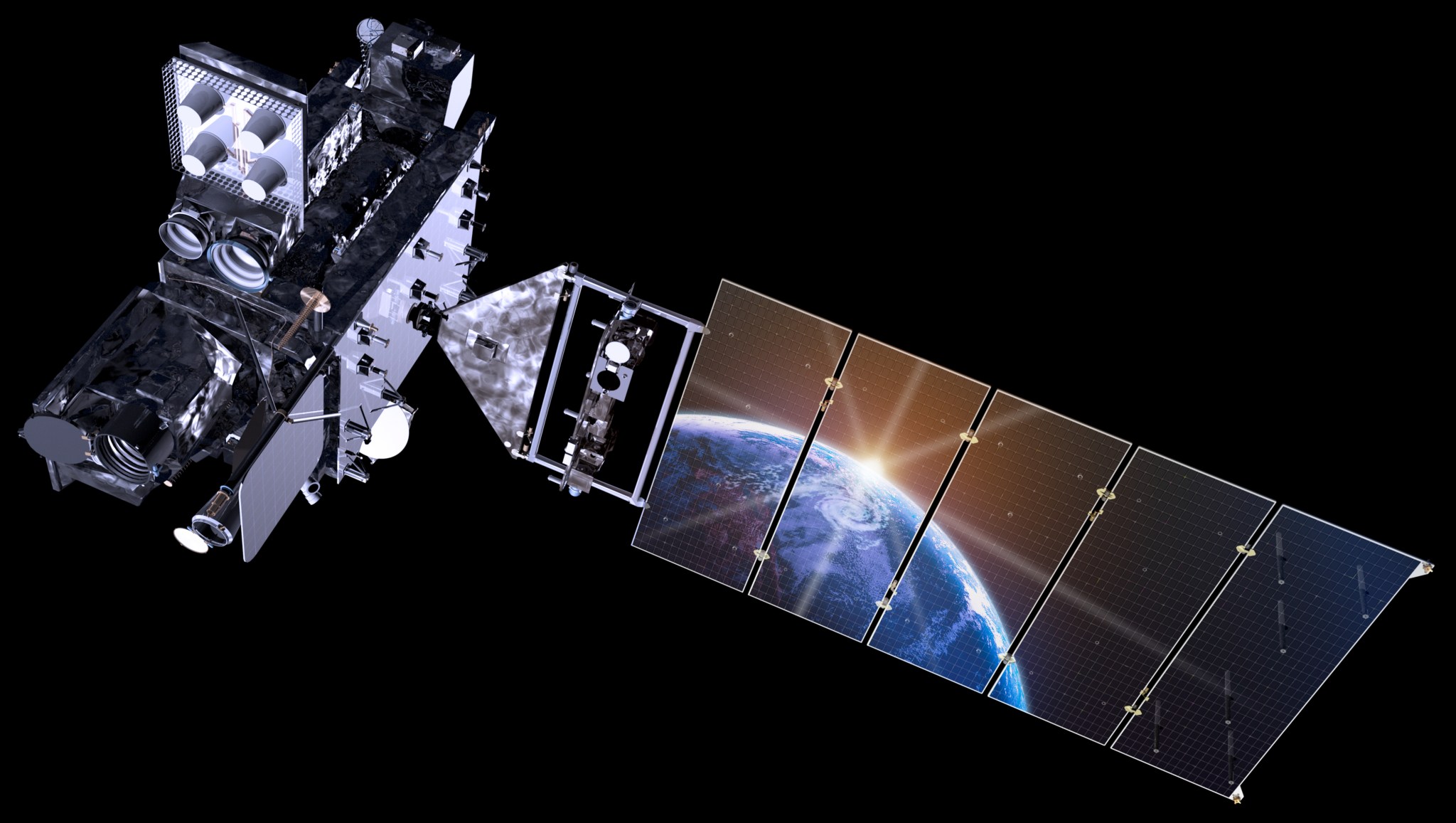One year from now, NOAA’s GOES-R weather satellite will be launched into space. So what does that mean for you? We’ve got 5 reasons why this launch is worth watching:
1. What’s the weather like today?
Perhaps you turn on the TV or radio, or check the weather app on your smartphone to get the latest weather forecast. Whether it is on an app, on the news, or a weather website, the information for those forecasts come from NOAA’s National Weather Service, or NWS.
NWS is the government agency whose meteorologists tell you when a storm is coming and make sure that you have the info you need to be safe during a severe weather event. So that part is clear, but how does the NWS know that a storm is coming? There are a few ways, but one of the most important is from NOAA’s weather satellites.
Weather satellites, like the GOES satellites, are the backbone of weather forecasts. Satellite data travels to the NWS where supercomputers and expert meteorologists run models that turn out a sophisticated forecast. The next generation GOES satellite, GOES-R, will be more advanced than any other weather satellite of its kind and could make the answer to the question “What’s the weather like today?” that much easier to answer.
2. More, better, faster!
Do you live in a flyover state, a state with a coastline or a state with a mountain range? Data from the GOES-R satellite will be a game changer for forecasters in your area. Here’s why: satellites are fitted with instruments that observe weather and collect measurements. The primary instrument on the new GOES-R satellite will collect three times more data and provide four times better resolution and more than five times faster coverage than current satellites. This means the satellite will scan Earth’s Western Hemisphere every five minutes, and as often as every 30 seconds in areas where severe weather forms, as compared to approximately every 30 minutes with the current GOES satellites. Pretty cool.
3. GOES-R: Making Things Safer.
This expedited data means that forecasts will be timelier, with more “real-time” information in them, allowing the NWS to make those warnings and alerts that much faster, thereby potentially saving lives.
And a faster forecast is a big deal for our economy. Commercial shipping and aviation are just two examples of industries that rely on up-to-date weather data for critical decisions about how to route ships and safely divert planes around storms. Other potentially dangerous phenomena can also be observed by satellites, including volcanic ash clouds, dangerous fog and changing hurricane intensity.
Want to know how improve your own weather intel? Check out NOAA’s “Weather-Ready Nation” initiative here, aimed at helping citizens prepare for severe weather events, or follow them on Twitter @NWS and Facebook.
4. Having electricity is pretty great.
We all depend on the power grid for virtually every aspect of modern life. But that grid is vulnerable to bursts of energy from the sun that can affect us on Earth. Luckily, GOES-R, will be sitting 22,000 miles above us, and in addition to measuring weather on Earth, it will also monitor incoming space weather. Geomagnetic storms, or space weather, occur when a solar wind shock wave or cloud of magnetic particles from the Sun impacts Earth’s magnetic field. These storms have the potential to bring significant disruptions to every major public infrastructure system, including power grids, telecommunications and GPS.
Check out this video to learn more about how GOES-R will help protect us in the face of stormy space weather.
For more information and access to current space weather conditions and alerts, visit NOAA’s Space Weather Prediction Center at http://www.swpc.noaa.gov and follow them on Facebook
5. Geek out on space-based science.
I can tell that you are really cool, which means that you also love weather and science. If you want a daily fix of awesome, gorgeous views of our planet, every day, they are right at your fingertips…click here. You can also check out great videos on our YouTube channel , follow GOES-R’s progress on Facebook and learn more about the science behind the satellites on our website, www.goes-r.gov. So go ahead, geek out, and be fan of NOAA’s GOES-R weather satellite.
Related Link:
Related Story: GOES-R Coming to an Orbit Near You: One Year and Counting
Rob Gutro
NASA’s Goddard Space Flight Center





























